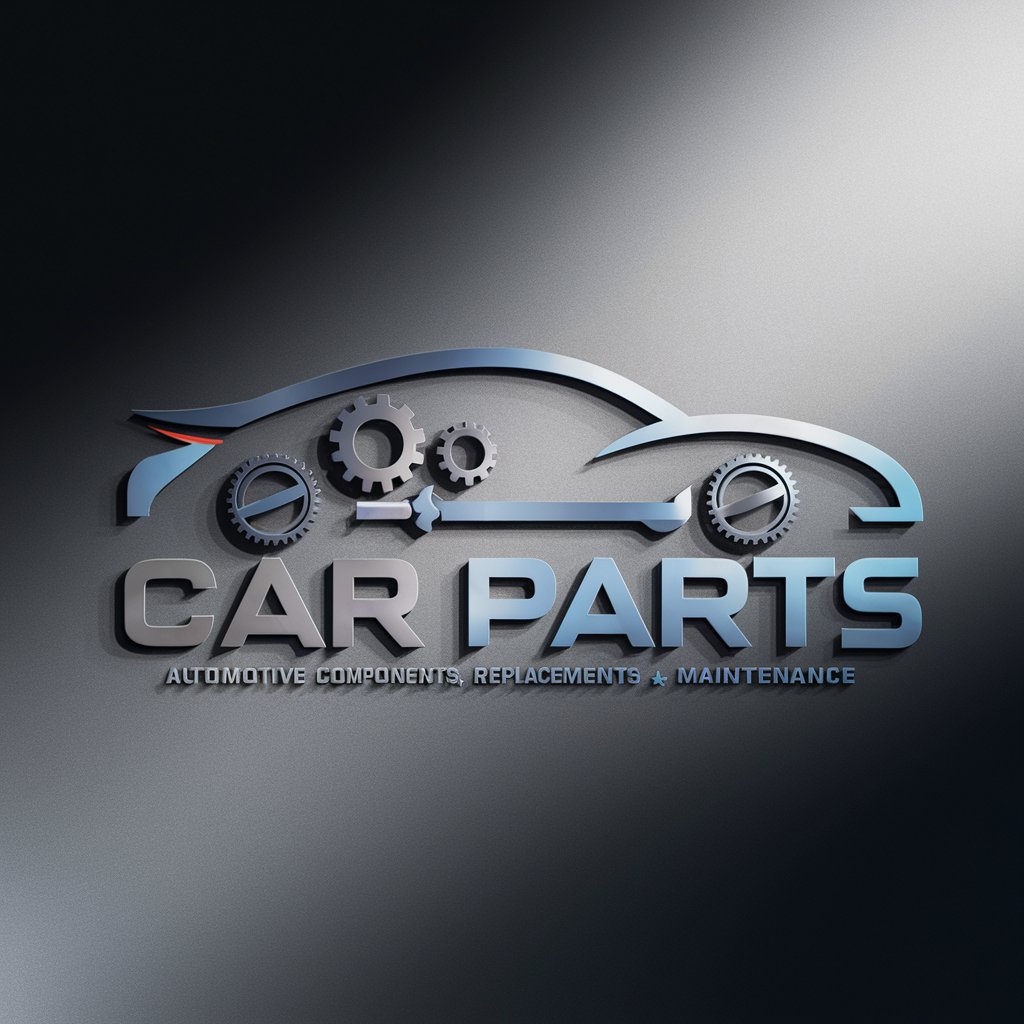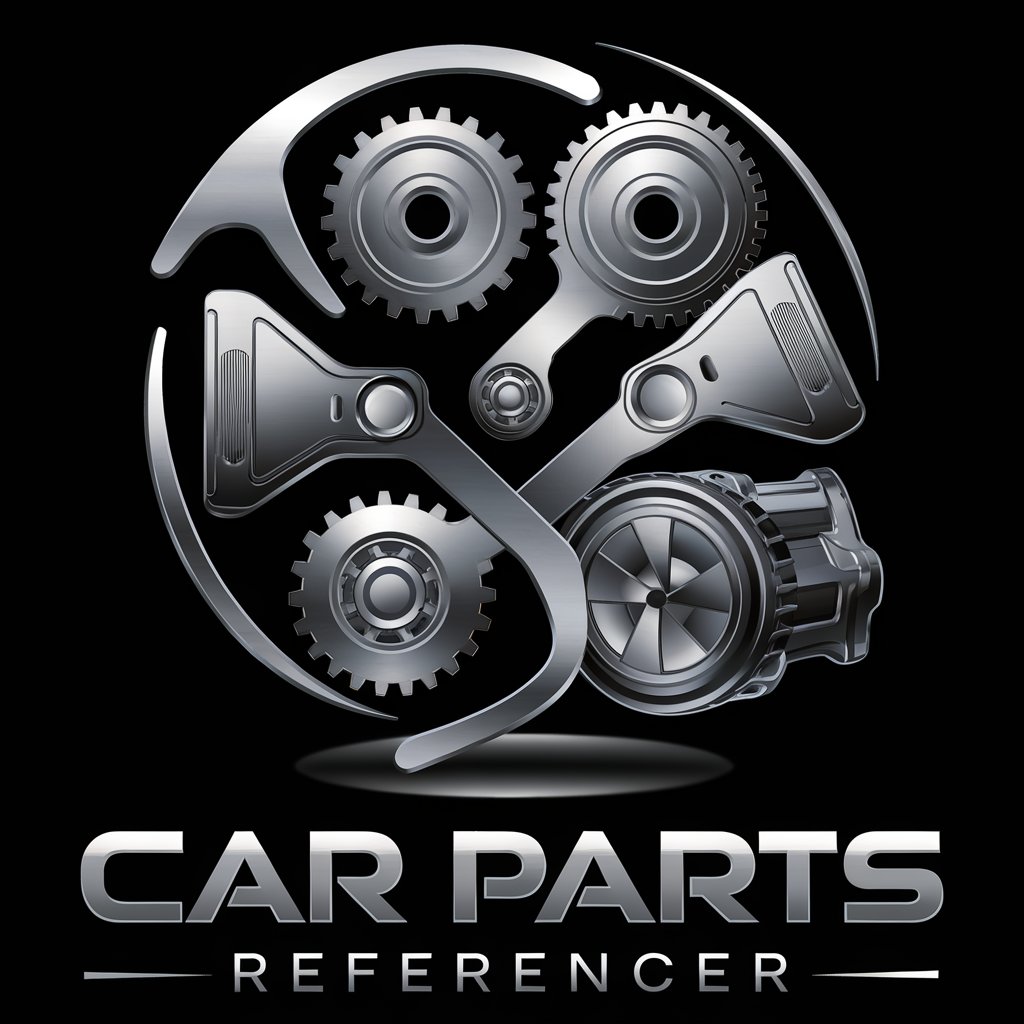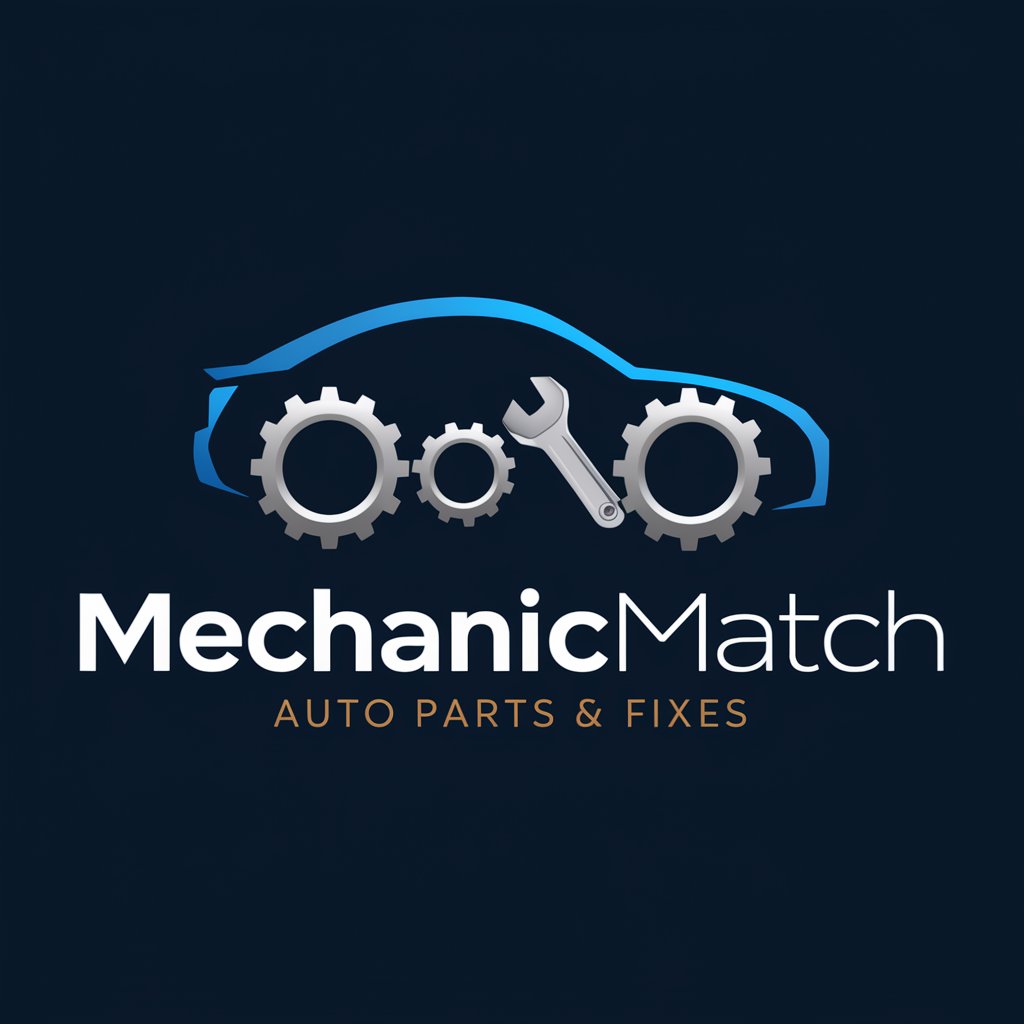
Car Parts - Car Parts Information

Hello! How can I assist with your car maintenance needs today?
Empowering automotive knowledge with AI.
Can you explain the function of a car's alternator?
What are the signs that brake pads need to be replaced?
How do you perform an oil change on a standard vehicle?
What are the differences between various types of engine oils?
Get Embed Code
Introduction to Car Parts GPT
Car Parts GPT is designed to serve as an expert guide in the realm of automotive components, offering in-depth information, technical advice, and practical tips on a wide range of car parts and maintenance strategies. This specialized GPT aims to bridge the gap between automotive enthusiasts, DIY mechanics, and professionals by providing detailed explanations on the functionality, troubleshooting, and replacement procedures for various automotive systems. From explaining the intricacies of an internal combustion engine's components, such as pistons, crankshafts, and camshafts, to the nuances of modern vehicle systems like electronic control units (ECUs), advanced driver-assistance systems (ADAS), and hybrid powertrains, Car Parts GPT covers a broad spectrum. It utilizes real-world scenarios to illustrate common issues and solutions, such as diagnosing a faulty alternator through symptoms like dimming headlights and weak battery performance, or detailing the step-by-step process of replacing brake pads to ensure optimal braking efficiency. Powered by ChatGPT-4o。

Main Functions of Car Parts GPT
Technical Information Provision
Example
Providing comprehensive details on the workings of an automatic transmission, including torque converter operation, gear ratios, and hydraulic control systems.
Scenario
A user is experiencing unexpected gear shifts and seeks to understand the possible causes. Car Parts GPT explains the role of the transmission control module (TCM) and how fluid levels or sensor issues can affect functionality.
Maintenance and Repair Advice
Example
Guiding users through the process of replacing a timing belt, including necessary tools, timing marks alignment, and precautions to avoid engine damage.
Scenario
An enthusiast planning to perform a timing belt replacement on a high-mileage vehicle receives step-by-step instructions and tips on checking water pump condition and tensioner pulleys during the procedure.
Troubleshooting Support
Example
Diagnosing common issues with vehicle HVAC systems, such as insufficient cooling, and suggesting potential fixes like refrigerant recharge or blower motor replacement.
Scenario
A user complains about the car air conditioning blowing warm air. Car Parts GPT provides a troubleshooting guide that covers checking the refrigerant level, inspecting the compressor clutch, and evaluating the condenser for blockages.
Ideal Users of Car Parts GPT Services
Automotive Enthusiasts
Individuals passionate about cars, interested in learning more about how various car systems work, performing their own maintenance, or undertaking modifications. They benefit from detailed component explanations and DIY guides.
DIY Mechanics
Home mechanics seeking to perform repairs and maintenance on their vehicles. They require precise, step-by-step instructions, troubleshooting tips, and advice on tool selection and usage.
Professional Technicians
Experts working in automotive repair and maintenance facilities who need up-to-date information on modern car technologies, detailed component function analysis, and advanced diagnostic techniques to efficiently solve complex mechanical issues.

How to Use Car Parts
1
Start by visiting yeschat.ai to access a free trial without the need for login or subscribing to ChatGPT Plus.
2
Choose the 'Car Parts' option from the list of available GPTs to specifically focus on automotive components and maintenance.
3
Input your query related to any automotive part, maintenance advice, or technical information in the chat interface.
4
Review the detailed, comprehensive responses provided, tailored to your specific questions about car parts and their maintenance.
5
Utilize the information for educational purposes, DIY maintenance projects, or to enhance your understanding of automotive systems.
Try other advanced and practical GPTs
MedEd Master
Empowering MedEd with AI

Hemingway Editor
Streamline Your Writing with AI

Prompts Generator
Tailor-made AI Prompts at Your Fingertips

IFTTT Assistant
Automate life's tasks seamlessly with AI

Digital Artist
Bringing Your Vision to Life with AI

Headline Maestro
Craft Captivating Headlines with AI Power

Munger Mind
AI-powered Munger Wisdom at Your Fingertips

Pneumo Rehab Guide
Empowering lung health with AI.

WHEA Contract Guide
Clarifying contract language with AI power

Electron Extended Model
Revolutionizing Electron Physics with AI

Fashion Design Assistant
Revolutionizing Fashion Design with AI

CAIDP Research Assistant
Empowering AI Policy Insight

Detailed Q&A about Car Parts
What is the function of an alternator in a vehicle?
The alternator is a key component in a vehicle's electrical system, responsible for generating electrical power to charge the battery and supply energy to the vehicle's electrical systems when the engine is running. It converts mechanical energy from the engine into electrical energy through electromagnetic induction.
How often should brake pads be replaced?
Brake pads should typically be replaced every 50,000 miles, but this can vary depending on driving habits, vehicle type, and the quality of the brake pads. It's important to listen for noise, pay attention to brake responsiveness, and have them inspected regularly for wear.
What are the signs of a failing transmission?
Signs of a failing transmission include slipping gears, delayed engagement, fluid leaks, unusual noises, and a burning smell. If you experience any of these symptoms, it's crucial to have your transmission checked by a professional to prevent further damage.
Can regular maintenance extend the life of my car?
Yes, regular maintenance such as oil changes, brake checks, tire rotations, and timely repairs can significantly extend the life of your car by preventing major issues and ensuring optimal performance.
What's the difference between synthetic and conventional oil?
Synthetic oil is a man-made lubricant that offers superior performance in extreme temperatures, better engine protection, and longer intervals between oil changes compared to conventional oil, which is derived directly from crude oil and may not provide the same level of protection or efficiency.





